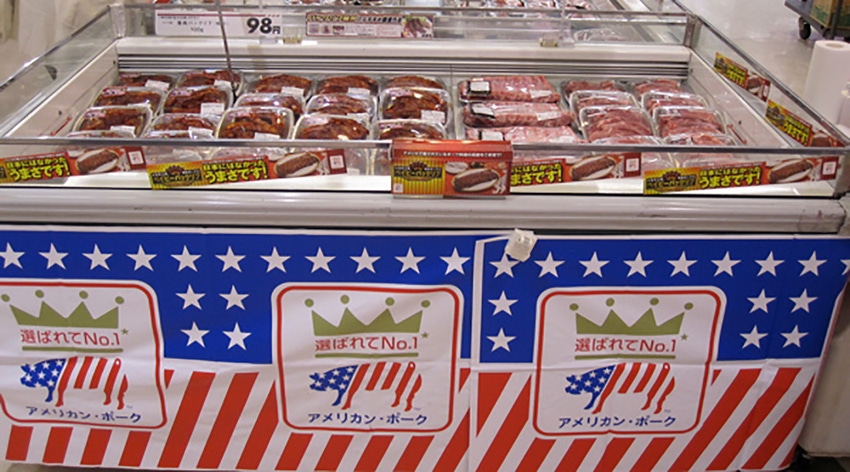Ground seasoned pork is just one product category for which U.S. market share is at risk.
December 10, 2018

As Japan moves forward with the ratification and implementation of the Comprehensive and Progressive Agreement for Trans-Pacific Partnership and the Japan-EU Economic Partnership, U.S. pork and beef will be stuck in a tariff disadvantage to its major red meat export competition. That’s the message Dan Halstrom, U.S. Meat Export Federation president and chief executive officer, presented in his testimony today during a public hearing held by the Office of the U.S. Trade Representative in preparation for its upcoming trade agreement negotiations with Japan.
“It’s not only our largest value market, it’s also one of the larger profit margin markets,” Halstrom says. “That being said we are very conscious of the fact that our competitors have the CPTPP agreement and of course the EU Japan EPA which will dramatically increase their competitiveness over the next several years, so it is essential we get this process underway quickly.”
U.S. pork exports are estimated at about $1.66 billion in in 2018 while U.S. beef exports to Japan will likely exceed $2 billion this year. Japan is the second largest volume market for U.S. pork, taking 393,648 metric tons in 2017 and volume was up 2% through September 2018.
However, Halstrom says the Japanese red meat market is intensely competitive, and several exporting countries are set to make major market access gains in Japan through the CPTTP and the economic partnership agreement between Japan and the European Union. CPTPP will enter into force Dec. 30, while the Japan-EU EPA is expected to take effect early next year.
Japan’s 38.5% tariff on imported beef is among the highest in the world, and Australian beef is already subject to lower rates through a free trade agreement that took effect in 2015. Australian beef will gain even more tariff relief in Japan through CPTPP, as will beef from Canada, New Zealand and Mexico.
Pork from the EU, Canada, Chile and Mexico will also gain a significant advantage from the Japan-EU EPA and CPTPP. As Halstrom explains, ground seasoned pork is just one product category for which U.S. market share is at risk.
“On the pork side, looking at the European Union and Canada in particular becoming more competitive on several product lines, some over time and some rather immediate, one is the ground seasoned pork segment where there is currently a 20% duty rate for everybody, but the European Union and Canada will go to around 14% and then after five years it will be 0% while we will still be at 20%,” Halstrom says. “This is a 100,000-metric-ton market that is at risk in a fairly short term.”
USMEF also submitted written comments to USTR in this proceeding, and all comments submitted are posted online.
About the Author(s)
You May Also Like



